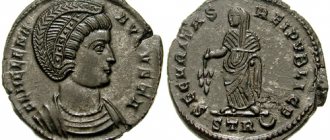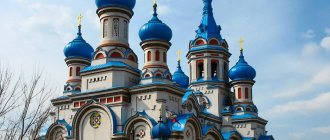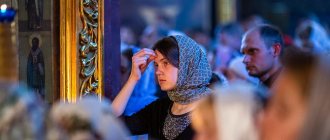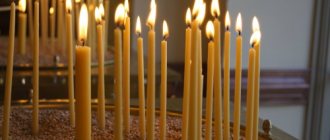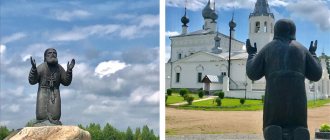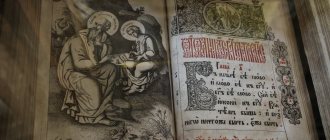Ruler of the entire empire
Gaius Flavius Valerius Constantine was born presumably in 272 in the city of Naissa, which corresponds to modern Serbian Niš. His father, Constantius Chlorus, was Caesar of the western cities of the Roman Empire, his mother Helen was a Christian of low birth. After the death of his father, Konstantin took over his position. Victory over his “competitors”, co-rulers Maxentius and Licinius, by 323 made him the ruler of the entire Roman state. He became the sovereign emperor. Constantine the Great realized his extraordinary role in the fate of the empire quite early. His special piety manifested itself even at the time when he was a pagan. Like his father, the future emperor was an adherent of solar monotheism, which consisted in the worship of the Invincible Sun. However, if he attributed the victory over Maximian Herculus to the patronage of a pagan deity, bringing a sacrifice to the temple of Apollo, then the decisive battle with Maxentius, thanks to which Constantine entered Rome, was a sign of the help of another God, previously unknown to the king.
Cross as a symbol
The development of the iconography of the Crucifixion as an event and the iconography of the Holy Cross as a symbol of the Crucifixion went in parallel. If on images of the Crucifixion of the Lord the cross usually had its historical form (with a title-tablet above the head and foot), then the Cross-symbol was more inclined towards a certain decorativeness. After all, the Cross of Christ is not just an instrument of execution, but also a symbol of victory over death, a symbol of atonement for human sins, a symbol of human salvation.
Therefore, starting with the adoption of Christianity by Emperor Constantine the Great, the cross became a triumphal sign and was included in the group of imperial symbols. From this time on, he receives, in a sense, autonomy from the iconography of the Crucifixion of Christ.
More specifically, the cross is often deprived of such attributes as a tablet with the inscription “Jesus of Nazareth, King of the Jews” and a foot. And in addition to its simple shape, its blades often widen somewhat towards the edges, and the edges themselves acquire rounded serifs, similar to those that we can see in the ceremonial fonts of early Byzantine manuscripts.
Mosaic crosses from Sophia of Constantinople
These are the types of crosses on the mosaics of Sophia of Constantinople. And this same shape of the cross was later borrowed by Western crusading knights as the basis for decorating their cloaks, gradually diversifying the original shape.
But if historical elements disappear from the symbolic sign of the cross, then elements are added, both decorative (for example, teardrop-shaped decorations at the corners of the blades of the cross or at the corners of the joints of the blades), and emphasizing one or another speculative meaning.
“This way you will win”
A significant battle took place in 312. With a small army, Constantine entered Italy and attacked the Eternal City. And then his opponent Maxentius made an irreparable mistake, which contradicted any military logic. Instead of taking the blow under the protection of the city walls, he left the city and took the battle near the Tiber River, where he was defeated. The victory in the Battle of the Milvian Bridge (under this name it went down in history) was attributed by Constantine the Great to the special intercession of the Christian God. And there were reasons for this. Church history says that the day before, Caesar was told in a dream to make a monogram with the two initial letters of the name “Christ” on the shields of the soldiers. This Christian sign is called "labarum". With him the army won.
Other historians write that the emperor, together with his soldiers, saw a cross in the sky at noon, covering the sun. The inscription on it read: Hoc vince (By this (this) you will win). In any case, Constantine’s victory was preceded by some revelation from God, a sign from above. With him the emperor entered Rome, and the Christian faith entered the heart of the ruler.
Cross of Constantine (Chi-Rho sign)
Cross of Constantine
Magic seal with the symbol "Chi-Rho" (Agrippa, 1533)
The Cross of Constantine is a monogram known as “Chi-Rho” (“chi” and “rho” are the first two letters of the name of Christ in Greek). Legend has it that Emperor Constantine saw this cross in the sky on his way to Rome, and along with the cross he saw the inscription “By this victory.” According to another legend, he saw a cross in a dream the night before the battle and heard a voice: “With this sign you will win”). They say that it was this prediction that converted Constantine to Christianity. And the monogram became the first generally accepted symbol of Christianity - as a sign of victory and salvation.
Rosicrucian cross
Cross with rose (Rosicrucian)
Another name is the cross of a rose (five-petalled). Emblem of the Rosicrucian Order. Symbol of harmony, center, heart. The rose and cross also symbolize the Resurrection and Atonement of Christ. This sign is understood as the divine light of the Universe (rose) and the earthly world of suffering (cross), as the feminine and masculine, material and spiritual, spiritual and sensual love. The cross with a rose is a symbol of an initiate who, thanks to work on himself, has managed to develop in himself love, life-giving and transforming matter.
Masonic cross
Masonic cross (cross in a circle)
The Masonic cross is a cross inscribed in a circle. It means a holy place and a cosmic center. The four dimensions of space in the celestial circle symbolize the totality that includes the Great Spirit. This cross represents the Cosmic Tree, spreading horizontally over the Earth and touching Heaven through the vertical central axis. Such a cross was either made in stone or depicted on the walls of Roman Gothic churches, symbolizing their sanctification.
Pacifist cross
Pacifist cross (peace cross)
This symbol was developed by Gerald Holtom in 1958 for the then emerging movement for nuclear disarmament. To develop the symbol, he used the semaphore alphabet: he made a cross from its symbols - for "N" (nuclear, nuclear) and "D" (disarmament, disarmament) - and placed them in a circle, which symbolized a global agreement. This cross soon became one of the most common signs of the 60s of the twentieth century, symbolizing both peace and anarchy.
Images of time
The wise turn years into months, months into weeks, weeks into days.
Paracelsus
Everything is perishable in this world.
The image of inexorable time is the road. The symbol of time is sand flowing through your fingers. Attributes of measured time - a clock, a burning candle; it is a symbol of the elusiveness of the present moment.
The pantheon of gods of almost all ancient cultures necessarily includes the God of Time.
Abraxas
Abraxas – symbol of time (Gnostic gem)
Abraxas is the personification of the divine cycles of the solar year. This is the mystical image of the Supreme Being, the highest of the seven. It consists of five emanations (radiations): Nus (Mind), Logos (Word), Phronesis (Mind), Sophia (Wisdom), Dynamis (Strength). The human body in the image represents God. The two snake supports emerging from it are Nous and Logos (intuition and quick understanding). The head of the rooster signifies foresight and vigilance (mind). Two hands hold the symbols of Sophia and Dynamis: the armor of wisdom and the whip of power.
Kalachakra
Namchu-vanden - Kalachakra emblem
Kalachakra literally means “wheel of time,” “passage of time.” The sacred doctrine in Vajrayana Buddhism. An astrological and astronomical system that penetrated into Tibet from India. Kalachakra introduces the idea of cyclical time with periods of 12 and 60 years (Tibetan calendar). According to legend, the Kalachakra teachings were given by Shakyamuni Buddha. According to other sources, this teaching was brought to Tibet by Pitop, or the Great Kalachakrapada, who, miraculously arriving in Shambhala, was initiated there by King Kalki into the Kalachakra teaching.
Kronos
Kronos (Roman Saturn), 15th century
The ancient Greek symbol of time - the Titan Kronos - in the Russian language became the ancestor of many words (the particle “chrono” is part of complex words indicating their relationship to time): chronic, chronology, chronometer, etc.
Kronos (Roman Saturn) - the god of Time, in the image of fading autumn or the departing Sun, sometimes along with his sickle also has a hood, which symbolizes invisibility, death and retreat. Since the hood covers the head, it also signifies thought and spirit.
"Symphony" of Church and State
The very next year after the outstanding victory, Constantine the Great issued the famous Edict of Milan, proclaiming freedom of religion in the Roman Empire. From now on, the persecution of Christians stopped, they could fearlessly be baptized and confess their faith. A new period began for Christianity in harmonious coexistence with state power. Over time, the wise ruler adopted a number of laws that secured privileges for the Christian Church and its clergy. They could now influence the political life of the state. In addition, the king’s Christian ideas were expressed in many of his other laws. For example, in 321 he officially declared Sunday a non-working day. By his decrees, the emperor banned pagan games, private fortune-telling and sacrifices, execution by crucifixion, as well as brands on the faces of criminals, since every person reflects the image of God. Another of the ruler’s main merits was the convening of the First Ecumenical Council . It took place in 325 in Nicaea with the goal of eliminating the Arian heresy from the Church. All this activity marked the beginning of the construction of a truly Christian Empire, thanks to which Constantine and his mother, Queen Helena, entered the history of the Church with the title of Equal-to-the-Apostles.
Constantinople - New Rome
The great king will be destined to accomplish another great plan. He moved the capital of his empire to another city, which was later named after him and became the heart of the Empire for more than a millennium. We are talking about Constantinople . Why didn't Rome please the emperor? Firstly, due to its unfavorable strategic location, because at that time it was safer to stay closer to the borders. Secondly, pagan morals were too ingrained in Rome, which were difficult to get rid of. In order to build a new, specifically Christian capital, the former colony city of Byzantium on the banks of the Bosphorus was chosen. There is an opinion that the choice of location for the new capital was also a revelation from God, given to Constantine the Great in a dream. Before this, the main “contenders” for it were Troy and Nicomedia. A beautiful legend tells that to determine the boundaries of the new capital, the emperor walked ahead of the surveyors with a spear in his hand, as if he was being led by someone invisible. When asked how long it would take to walk, he answered: Until the one walking ahead of me stops. The city came out on top. It took six years to build, bringing workers and materials from all over the world. In spring 330 g . it was solemnly consecrated by the bishops, the celebration lasted 40 days. Despite the fact that Constantine gave the capital the name New Rome , already during the life of the king it began to be called Constantinople.
Baptism before death
A paradoxical fact: the emperor, thanks to whom thousands of people were baptized during his lifetime, was baptized himself only before his death. However, such a practice was not surprising in those days. Combining Christian principles of life and government in practice was not easy. Executions and torture did not stop in the empire at that time; order could only be maintained by force. Moreover, due to the envious slander of his wife Fausta, Constantine the Great killed his son from his first marriage, Crispus, and then, having sorted it out, killed Fausta herself, ordering her to be locked in a bathhouse. And all this happened only a year after the Council of Nicaea. It cannot be said that the emperor was completely consistent in his Christian views. For example, for a long time he continued to combine the cult of the Invincible Sun with faith in Jesus Christ, even without considering it impossible. Until the last, he retained the title of high pagan priest. Struggling with Arian errors at the Ecumenical Council, he himself received baptism on his deathbed from Bishop Eusebius of Nicomedia, who was an Arian. Nevertheless, we honor Constantine the Great as a saint and equal to the apostles precisely for his incomparable contribution to the spread of Christianity in the Roman Empire and throughout the enlightened world.
Who was Saint Helen?
The emperor's mother, Saint Helena, also entered the history of the Church along with her son. She was a woman of simple origin, most likely the daughter of an innkeeper, who married Constantius Chlorus, a former Roman soldier, for love. In a marriage that lasted almost twenty years, they had a son. Everything changed when Helen's husband was appointed ruler of the western part of the Empire. For political reasons, Emperor Diocletian forced him to divorce and married him to his stepdaughter. He sent his son from his first marriage to Nicomedia. Queen Elena also moved closer to him. Here the future Equal-to-the-Apostles saint became acquainted with Christianity and was baptized. She was then about forty years old.
Finding a shrine
The queen had to carry out a special mission much later, almost forty years later. She was destined to find one of the main shrines of all Christians - the Cross on which the Lord Jesus Christ was crucified. For this purpose, in 326 she went to Jerusalem. On the former site of Golgotha there now stood a pagan temple dedicated to Venus. There was no one to find out where the Holy Sepulcher was located. Then Queen Helena, together with Patriarch Macarius of Jerusalem, began to pray and served a prayer service. After which they felt an incomprehensible fragrance emanating from the earth. This was an indication from above to the Cave of the Holy Sepulcher. The place where the true Cross of the Lord is located was shown by God's providence to one Jew named Judas, who preserved the old tradition. However, three crucifixes were found there with a sign next to them, which indicated that Jesus Christ was crucified on one of them. How was it possible to find out which one? Here again the providence of God intervened. People passed by that place carrying a dead man to the funeral. They were asked to stop. After this, all three crosses were placed on the deceased in turn, and when the last one was laid, he came to life. Thus a great miracle appeared - the Life-Giving Cross of the Lord was found. Many people crowded each other, wanting to see the shrine. Then Patriarch Macarius, together with Queen Helena, placed the Cross in a high, prominent place. People prayed in front of him with the words “Lord, have mercy!” This is how the Feast of the Exaltation of the Holy Cross arose, which we celebrate on September 27 . After these events, the Jew, who pointed to the place of the shrine, was baptized, became a monk, and later, becoming the Patriarch of Jerusalem, was canonized as a saint under the name Cyriacus.
Types of crosses on church domes
The crosses that are placed on the domes of the church are called overhead crosses. Sometimes you can notice that straight or wavy lines emanate from the center of the upper cross. Symbolically, the lines convey the radiance of the sun. The sun is very important in human life, it is the main source of light and heat, life on our planet is impossible without it. The Savior is sometimes even called the Sun of Truth.
A famous expression says, “The light of Christ enlightens all.” The image of light is very important for Orthodox Christians, which is why Russian blacksmiths came up with such a symbol in the form of lines emanating from the center.
Small stars can often be seen along these lines. They are symbols of the queen of stars - the Star of Bethlehem. The same one who led the Magi to the birthplace of Jesus Christ. In addition, the star is a symbol of spiritual wisdom and purity. Stars were depicted on the Cross of the Lord so that it would “shine like a star in heaven.”
There is also a trefoil shape of the cross, as well as trefoil endings of its ends. But the branches of the cross were decorated not only with this image of leaves. A huge variety of flowers and heart-shaped leaves could be found. The trefoil can have either a round or pointed shape, or a triangle shape. The triangle and trefoil in Orthodoxy symbolize the Holy Trinity and are often found in temple inscriptions and inscriptions on tombstones.
Trefoil cross
The vine entwining the cross is a prototype of the Living Cross, and it is also a symbol of the Sacrament of Communion. Often depicted with a crescent at the bottom, which symbolizes the cup. Combined together, they remind believers that during Communion the bread and wine are transformed into the Body and Blood of Christ.
The Holy Spirit is depicted in the form of a dove on the cross. The dove is mentioned in the Old Testament; it returned to Noah's ark with an olive branch to announce peace to people. Ancient Christians depicted the human soul in the form of a dove, resting in peace. The dove, meaning the holy spirit, flew to Russian lands and landed on the golden domes of churches.
If you take a closer look at the openwork crosses on the domes of churches, you can see doves on many of them. For example, in Novgorod there is a church called the Myrrh-Bearing Women, on its dome you can see a beautiful dove woven “literally from thin air.” But most often the cast figurine of a dove is at the top of the cross. Even in ancient times, crosses with doves were quite a common occurrence; even three-dimensional cast figurines of doves with outstretched wings were found in Rus'.
Thriving crosses are those that have shoots growing from their base. They symbolize the rebirth of life - the resurrection of the cross from the dead. The Cross of the Lord in the Orthodox canon is sometimes called the “Life-Giving Garden.” You can also hear how the holy fathers call him “life-giving.” Some crosses are generously dotted with shoots that really resemble flowers in a spring garden. The interweaving of thin stems, an art made by masters, looks alive, and tasteful plant elements complete the incomparable picture.
The cross is also a symbol of the tree of eternal life. The cross is decorated with flowers, shoots from the core or from the lower crossbar, commemorating the leaves that are about to bloom. Very often such a cross crowns a dome.
In Russia it is almost impossible to find crosses with a crown of thorns. And in general, the image of Christ the martyr did not take root here, unlike in the West. Catholics often depict Christ hanging on the cross, with traces of blood and sores. It is customary for us to glorify his inner feat.
Therefore, in the Russian Orthodox tradition, crosses are often crowned with flower crowns. The crown of thorns was placed on the head of the Savior and was considered a healing for the soldiers who wove it. Thus, the crown of thorns becomes the crown of righteousness or the crown of glory.
At the top of the cross, although not often, there is a crown. Many believe that crowns were attached to temples related to holy persons, but this is not so. In fact, the crown was placed on the top of the cross of churches built by royal decree or with money from the royal treasury. Additionally, the Scriptures say that Jesus is the king of kings or lord of lords. Royal power, accordingly, is also from God, which is why the crosses contain a crown on their top. The cross topped with a crown is also sometimes called the Royal Cross or the Cross of the King of Heaven.
Sometimes the cross was depicted as a divine weapon. For example, its ends could have the shape of a spear tip. Also on the cross there could be a blade or its handle as a symbol of a sword. Such details symbolize the monk as a warrior of Christ. However, it can only act as an instrument of peace or salvation.
The further fate of the Holy Cross
After the miraculous discovery, small parts of the Life-Giving Cross were taken by the Empress to Rome and Constantinople. Its main part remained in the Church of the Holy Sepulcher, which was built by Queen Helena on the site of the Jerusalem temple. There he remained until 614, when he was captured and abducted by the Persians. After the defeat of the Persians by Emperor Heraclius, the Cross was solemnly returned to its original place. Moreover, this was accompanied by one interesting event. When the emperor was approaching the city with the shrine, at some point an unknown force stopped him; he could not move. Patriarch Zacharias made the assumption that the magnificent attire does not correspond to the mission that the emperor is trying to accomplish; he must enter the city like the Savior. Then Heraclius changed his outfit to rags and, barefoot, calmly entered the city with the Cross. Fearing a new seizure of the main shrine by foreigners, the emperor later ordered the Cross to be divided into nineteen parts and distributed among the Christian churches.
The film from the series “Pilgrimage to the Eternal City” will tell you about the holy kings equal to the apostles:
Flourishing Cross
Flourishing cross. Reverse side of the icon of the Descent into Hell. Byzantium. X-XI centuries Georgia. Tbilisi. Art Museum
Even more specifically, a parallel is drawn with the heavenly Tree of Life in the image of the “flourished” cross. In this type of image, branches and leaves emerge from the base of the cross. Sometimes it is just a conventional floral ornament or a vine with leaves and clusters. In this context there is an additional eucharistic meaning.


